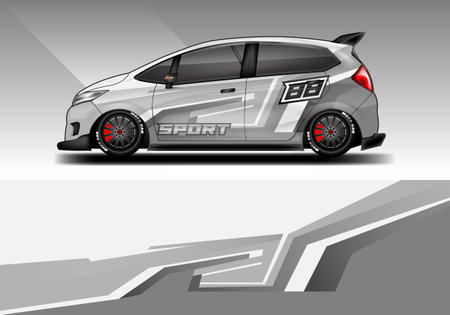Understanding Engine Break-In: Why It Matters
When it comes to high-performance engines, the break-in process is far more than a ritual—it’s a crucial engineering procedure that sets the foundation for longevity and optimal power output. The science behind engine break-in centers on the controlled wear of internal components, particularly the piston rings, cylinder walls, camshaft lobes, and bearings. During initial operation, microscopic high spots on these metal surfaces—known as asperities—must be carefully smoothed out through friction under precisely controlled conditions. This micro-polishing process ensures that parts fit together perfectly, minimizing blow-by and oil consumption while maximizing compression and efficiency.
Proper seating of components during break-in directly impacts long-term performance. If the process is rushed or skipped, uneven wear can lead to hot spots, excessive oil consumption, premature bearing failure, and even catastrophic engine damage. On the other hand, an engine that has been methodically broken in will exhibit superior sealing characteristics, consistent power delivery, and reduced mechanical drag. Ultimately, understanding the science of break-in is about balancing frictional forces to allow components to adapt to each other without introducing unnecessary stress or heat—ensuring your high-performance engine lives up to its full potential for years to come.
2. Prepping for Break-In: What You Need to Know
Before you even turn the key, setting the stage for a successful break-in is crucial for maximizing both the longevity and power of your high-performance engine. Proper preparation not only ensures optimal results but also aligns with American shop standards for quality and safety. Below, we’ll break down the key steps and considerations you need to cover before starting the engine for the first time.
Choose the Right Oil
Oil selection is foundational to engine break-in. High-performance engines typically require a specific type of oil that supports proper ring seating while minimizing premature wear. Most American builders recommend using a dedicated break-in oil, which usually contains higher levels of zinc (ZDDP) and phosphorus additives. Avoid synthetic oils during initial break-in as they can be too slippery, hindering proper component mating.
| Oil Type | Recommended For | Key Properties |
|---|---|---|
| Break-In Oil (High ZDDP) | Initial 500-1,000 miles | Promotes ring seating, reduces scuffing |
| Conventional Oil | Stock rebuilds or low-stress engines | Adequate protection, budget-friendly |
| Synthetic Oil | After complete break-in | Superior long-term protection, less friction |
Coolant System Checks
An efficient cooling system is non-negotiable for high-performance builds. Prior to break-in, flush the entire system to remove contaminants, inspect hoses for integrity, and verify that radiators and water pumps are functioning correctly. Use a 50/50 mix of distilled water and high-quality coolant unless your build specifies otherwise. Inadequate cooling during early operation phases can cause hot spots leading to warping or premature failure.
Maintain a Clean Build Environment
The cleanliness of your assembly space directly impacts engine health. According to best practices in American shops, thoroughly clean all engine components before assembly—this means no residual machining debris or dust should remain. Use lint-free towels and avoid introducing foreign particles into the block or head. After assembly, double-check torque specs and sealing surfaces to prevent leaks or improper fitment.
Quick Checklist: Pre-Break-In Essentials
| Task | Status (Check/Verify) |
|---|---|
| Select appropriate break-in oil | ✓ |
| Flush and fill coolant system with correct mixture | ✓ |
| Inspect for leaks after assembly | ✓ |
| Verify torque specs on critical fasteners (head bolts, main caps) | ✓ |
| Ensure work area is free from contaminants before final assembly | ✓ |
Summary: Setting Up for Success
The success of your engine’s break-in period hinges on meticulous preparation. Choosing the right fluids, checking cooling systems, and assembling in a spotless environment are non-negotiable steps embraced by top American performance shops. Getting these details right sets you up for greater power output and reliability down the road.

3. Initial Startup: Setting the Foundation
The first startup of a high-performance engine is a critical phase that sets the tone for its future reliability and power output. U.S. performance shops emphasize a systematic approach to ensure every detail is addressed before and during ignition. Begin by double-checking all fluid levels—engine oil, coolant, and fuel—and verifying that each system is properly filled with high-quality fluids recommended by the engine builder or manufacturer.
Visual Inspections and Leak Checks
Before turning the key, perform a thorough visual inspection. Look for any loose bolts, missing fasteners, or pinched wires around the engine bay. Pay close attention to the fuel lines, coolant hoses, and oil connections. Many American builders use a pressurized leak-down test or vacuum check at this stage to ensure seals and gaskets are properly seated. Once satisfied, prime the oiling system either by hand or using a pre-lube tool to avoid a dry start.
Monitoring Key Parameters
With everything in place, proceed with the initial ignition. Start the engine and immediately monitor vital parameters: oil pressure should register within seconds—if not, shut down and investigate. Watch coolant temperature closely; most U.S. tuners recommend keeping it below 200°F (93°C) during break-in. Listen for unusual noises such as knocking or ticking, which could indicate assembly issues.
Addressing Issues Quickly
If leaks or abnormal readings appear, address them right away—do not let the engine run through problems. American best practices prioritize short, controlled runs with cool-down periods between startups to allow components to seat and expand evenly. After each short run, inspect underneath the vehicle for fresh drips and recheck fluid levels.
Data Logging and Documentation
Serious enthusiasts and professional shops often log vital data during these first startups using digital tools or manual records. Tracking oil pressure curves, temperature trends, and even idle quality helps diagnose potential issues early and provides valuable reference points for future tuning.
Laying the Groundwork for Longevity
A meticulous initial startup isn’t just about avoiding immediate failures—it’s about establishing optimal conditions for ring seating, bearing longevity, and consistent power delivery over thousands of miles. By following these detailed steps modeled after U.S. performance shop standards, you’re ensuring your high-performance engine has the best possible start to its service life.
4. First Miles: Controlled Driving for Best Results
During the critical first few hundred miles of a high-performance engine’s life, your driving habits directly influence the long-term durability and power output of the motor. The goal is to promote optimal piston ring seating while minimizing premature wear on internal components. To achieve this, it’s essential to follow a structured approach that balances load, RPM, and engine temperature.
Ideal Driving Conditions
For best results, avoid stop-and-go city traffic, excessive idling, or sustained high-speed freeway cruising. Instead, choose routes where you can vary speed and load—such as lightly traveled suburban roads or rural highways. Avoid using cruise control during this period; constant speeds do not allow engine parts to mate and wear in properly.
Recommended RPM Ranges and Load Variation
The following table summarizes ideal operational parameters for the initial break-in phase:
| Mileage Range (mi) | RPM Range | Throttle/Load Guidance |
|---|---|---|
| 0–100 | 1,500–3,500 | Keep throttle below 50%, avoid full acceleration; use gentle accelerations and decelerations. |
| 100–300 | Up to 4,000 | Gradually introduce higher loads; occasional brisk acceleration up to 60% throttle. |
| 300–500 | Up to 5,000 (if applicable) | Short bursts of increased RPM/load are acceptable; avoid redline and extended high RPM operation. |
Key Timeframes and Practices
- First 20 miles: Critical for initial ring seating—frequently vary throttle position and RPM.
- First oil change: Usually recommended between 500–1,000 miles to remove metal particles from early wear-in.
- Avoid lugging: Do not allow the engine to labor at low RPM in high gears; downshift when necessary.
- No towing or heavy loads: Postpone until after the break-in period.
Cultural Note for American Drivers
While American highways tempt drivers with long stretches of steady-speed travel, resist the urge to engage cruise control or “set it and forget it.” Engine break-in is about controlled variety—think of it as an investment in your vehicle’s performance legacy. If possible, plan scenic weekend drives on winding backroads that allow you to naturally fluctuate speed and load without aggressive driving.
5. Oil Change and Inspection: Critical Early Maintenance
After the initial break-in period, performing an oil and filter change is not just a recommendation—it’s essential for safeguarding your high-performance engine’s future. During break-in, microscopic metal particles can shed from newly mated surfaces as components wear in and settle into their final tolerances. If these particulates remain in circulation, they can accelerate wear or cause premature failure.
Why Early Oil Changes Matter
The first oil change after break-in is arguably the most important one your engine will ever have. Standard practice among U.S. performance enthusiasts and manufacturers suggests changing the oil and filter after the first 500 to 1,000 miles. This step flushes out contaminants and ensures that only clean, high-quality lubricant remains to protect vital internal parts as full-throttle operation becomes more frequent.
What to Look for During Inspection
When draining the old oil, pay close attention to its color and consistency. A slightly darker shade is normal, but any metallic sheen or glitter indicates excessive metal wear. Inspect the drain plug (especially if it’s magnetic) for shavings or sludge. Additionally, check the oil filter by cutting it open—a common shop practice—to look for trapped debris that could signal abnormal engine wear or improper break-in technique.
Abnormal Findings: When to Be Concerned
If you find an unusual amount of metallic particles, milky coloration (which can indicate coolant contamination), or a burnt smell, it’s crucial to halt further use and consult with a professional mechanic. These warning signs may point to deeper mechanical issues that need immediate attention before more severe damage occurs.
Establishing a Maintenance Routine
By making early oil changes and inspections a habit, you’re investing in your engine’s longevity and consistent power output. Following this protocol aligns with best practices within the American performance community, ensuring your vehicle delivers on its promise of reliability and peak performance for years to come.
6. Long-Term Habits for Lasting Power and Reliability
Once you’ve completed the initial break-in period, your focus should shift to preserving your high-performance engine’s longevity and ensuring it consistently delivers power. For American performance vehicles, establishing and maintaining smart habits is crucial. Start with a proactive maintenance schedule: use high-quality synthetic oils formulated for performance engines, and adhere strictly to manufacturer-recommended oil change intervals. Inspect and replace air filters regularly, as clean airflow is essential for optimal combustion.
Ongoing Maintenance Strategies
Routine checks of coolant levels, belts, hoses, and spark plugs can help you catch minor issues before they become costly failures. Don’t overlook the importance of using top-tier fuel; detonation from low-octane gasoline can quickly damage a tuned engine. Additionally, ensure your vehicle’s software—such as ECU tuning parameters—remains up-to-date to maximize efficiency and reliability.
Smart Driving Habits
Your driving style directly affects engine health over time. Allow your engine to reach operating temperature before applying heavy throttle or high RPMs; cold oil doesn’t protect internal components as effectively. Avoid frequent short trips that prevent the engine from fully warming up, and alternate between spirited drives and relaxed cruising to promote even wear across engine parts.
Monitoring Engine Health
Modern American performance cars are equipped with sophisticated diagnostics—use them to your advantage. Regularly scan for fault codes, monitor oil pressure and temperature gauges, and listen for unusual noises during operation. If your vehicle isn’t factory-stock, consider installing aftermarket sensors or data loggers for even more granular monitoring.
Ultimately, combining diligent maintenance routines with disciplined driving habits will keep your high-performance engine running strong for years. Staying vigilant not only extends engine life but also ensures you continue enjoying the full potential of your American muscle or sports car on every drive.


